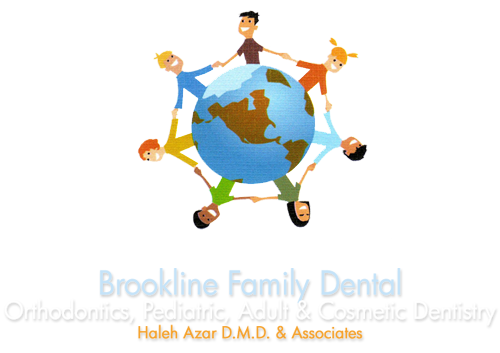

The American Academy of Pediatric Dentistry recommends your child's
first dental visit after the first tooth erupts and no later than the
child's first birthday. This enables the children's dentist to do a
baseline oral care exam and provide parents with children's dental care
information to help properly care for the child's unique dental needs.
Everyone, especially kids, should see the dentist to have their teeth
cleaned every six months. Decay is more likely to happen when kids are
young so it is important to have regular appointments.
During each teeth cleaning appointment, you and your child can expect a:
Fillings are necessary when small cavities are found. Parents and
kids have the choice of what type of fillings are used.
White, or composite, fillings are designed to match the color of the
tooth. White fillings are often used on front teeth for a more natural
look. White fillings do cost a little more and may not be strong enough
in certain situations.
Silver, or amalgam, fillings are generally stronger and less costly than
white fillings; however, they look less natural in the mouth. Silver
fillings are often used in the back teeth where they are less noticeable
and where chewing force requires stronger fillings.
Fluoride helps protect teeth from decay. Fluoride treatments are given once a year, or as needed to restore fluoride levels, to all children under the age of 14 during their regularly scheduled exam and cleaning. The fluoride is either a foam or gel placed in trays set over the child's teeth.
Dental sealants are a tooth colored plastic material applied to the chewing surfaces of the teeth to "seal out" plaque and food to prevent cavities. The sealant material is simply painted onto the chewing surface of the back teeth where it bonds and hardens in seconds. Sealants are commonly placed on the permanent 6 year and 12 year molars because decay is more likely to develop on these back teeth.
Space maintainers hold the place of a tooth that has prematurely fallen out of a child's mouth due to decay or injury. A space maintainer can be a band or crown attached to another tooth. The dentist will remove the space maintainer once the permanent tooth starts to grow in. If a space maintainer is not put in the vacant space the surrounding teeth can crowd and take over that space. This makes the permanent tooth come in crooked or crowded which leads to difficulties in chewing and talking.
The American Association of Orthodontists recommends that every child have an orthodontic evaluation by an Orthodontist as they approach the age of 7. Early detection and treatment of specific dento-facial developmental problems give your child the special edge needed for a better chance at normal and natural development. At our office, your child is evaluated for potential dento-facial developmental problems at a much younger age. Since most of our patients begin their dental check-ups between the ages of 1-2, we are not only evaluating their dentition, but also their overall growth and development of their jaws, face and supporting structures. Any significant variation from normal development (which typically is recognized at a young age) is diagnosed and evaluated for future correction and/or guidance as may be appropriate for your child and their stage of development. With early diagnosis and by working with the natural growth of your child?s dentition and jaws, we can prevent problems from becoming worse. As your child matures, our dual specialties can provide the accurate diagnosis, tooth guidance and appropriate orthodontic intervention that will ensure the best possible results.
Early treatment should be initiated for:
Facial Development- Seventy-five percent of 12-year-olds need orthodontic treatment for a variety of problems. Yet 90% of a child?s face has already developed. By guiding facial development earlier, through the use of early orthodontic appliances, 80% of the treatment can be corrected before the adult teeth are present, by correcting the underlying size, shape and position of the growing bones of the lower face.
Cooperation- younger children between the ages of 8-11 are often much more cooperative than children near or at the age of high school. Psycho-socially, it is easier to address and correct the facial development of a younger child than on a young adolescent. As children grow and mature, unresolved developmental problems are more difficult to correct and the child may negatively internalize the unfortunate resultant physical characteristics. Focusing on these traits during their adolescence is a delicate endeavor for them, but essential in their pursuit of self-acceptance.
Dento-Facial Orthopedics- Almost 55% of children who need orthodontic treatment due to a bad bite have underdeveloped or overdeveloped upper or lower jaws. Early orthodontic treatment can reposition the jaws, improving the child?s profile and correcting the bite problem. Early normalization of dento-facial problems is one the components in the development of a child?s self-esteem.
In the first phase, the doctor is interested in the position, size, and symmetry of the jaws as well as the developing alignment of the teeth, future growth potential, spacing of the teeth, breathing and other oral habits which may, over time, result in abnormal dento-facial development. Treatment initiated in this phase of development is often very successful and some times, though not always, can eliminate the need for future orthodontic and/or surgical treatment.
In the second phase, the doctor will be looking at how your child?s teeth and jaws fit and work together. Your child?s teeth will be straightened and their occlusion (bite) is properly aligned. Attention will be given to the jaw joint (TMJ), the maturation of the face and facial profile, periodontal (gum) tissues and the stability of the final results. By undergoing the first phase, we can usually reduce the amount of time needed for braces on the permanent teeth.
![]()
The new Invisalign Teen? system straightens your teeth with custom-made clear aligners that are comfortable and practically invisible. It was developed with leading orthodontists. And it works ? one million patients worldwide have made Invisalign their clear choice. See, lots of good reasons to smile.